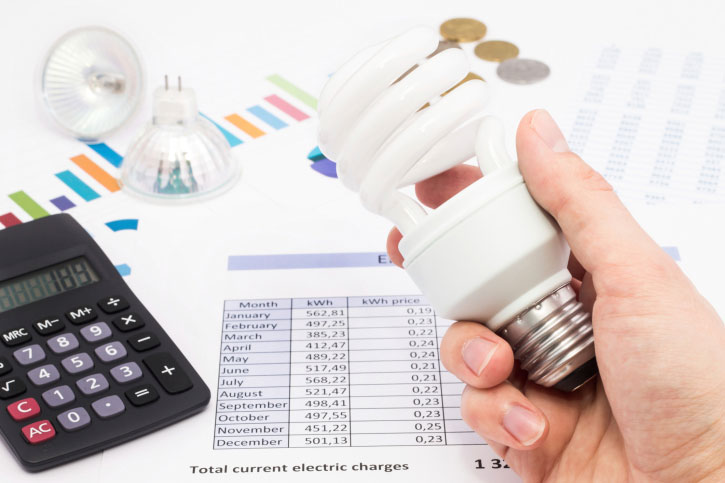When you’re in the market to buy a home there are several expenses to consider. Often times, potential buyers will focus on the purchase price and upfront costs. While it’s important to consider both of those expenses, it’s also necessary to consider the monthly costs of owning a home. Some of the costs will be fixed or semi-fixed, while others may vary. Utility costs can be one of the largest monthly bills and potentially one of the hardest to predict. Here are a few ways to estimate your future utility payments.
The main ingredients of utility bills include: electric, gas (natural gas or propane), oil, water, and/or sewer. The main source for heating and cooling differs from region to region. For decades, natural gas has been the dominant choice for heating homes; however, in many areas, electric is gaining market share for residential homes. Since electricity powers heating, cooling, and the vast majority of today’s modern amenities, it’s important to look closely at national averages for monthly electrical bills. According to the Department of US Energy, the average residential electricity bill for 2013 was $112.31. In sum, electric is commonly the largest, most expensive utility.
Climate plays a significant role in estimating one’s utility expenses, so it’s helpful to examine regional averages as well. The West South Central states tend to either use the most electricity or pay the most with an average monthly costs of $126.76. It’s also safe to say that they consume more water, thus increasing the total cost of monthly bills as well. The Pacific Contiguous states tend to either use the least amount of electricity or pay the least with an average monthly costs of $90.84. New Mexico has the lowest monthly average of only $76.56. These averages may be skewed due to supplemental heat sources such as natural gas, oil, kerosene, and other fossil fuels. Some of these items are considered “liquid gold,” and could impact one’s monthly expenditures significantly.
Looking at national averages and regional averages will help you draft an expected budget. Once you get dialed into a specific home, you will be able to predict your expenses with better accuracy. Often times, your realtor can ask the existing homeowner to provide the last 12 months worth of utility expenses. A full twelve months will give you a well-developed estimate of how the seasons can affect your bills. From there, you can create a monthly budget. Nowadays, some power companies will research historical usages and set the owner up on averaged payment plan to level out seasonal ebbs and flows. For a home that’s at least one year old, you should be able to get a realistic expectation based on the most recent bills.
One last thing to consider while estimating your utilities is the fact that a home can become both more energy efficient and less energy efficient over the years. Replacing windows and appropriately using curtains and blinds can impact the heating and cooling needed to control the home’s temperature. Adding insulation, weather stripping, and caulking can also improve the home’s ability to heat and cool. Swapping out light bulbs, eliminating electrical vampires, setting timers, and perhaps even adding solar panels will decrease electrical consumption. You may consider replacing appliances with energy star rated ones as well; dishwashers, washers, dryers, and/or water heaters. There are even ways to consume less water with different low-flow fixtures. Delinquency to either maintaining the above or replacing them can worsen your bills. Replacing and maintaining specific items may improve your utility bills. Remember that even if your estimates are high, there may be opportunity for improvement.
Every dollar counts and it’s important to evaluate how each dollar is going to be spent while purchasing a home. Some are more easily accounted for than others. Take a glance at national averages and regional averages – it will help get you in the right ball park. Asking the current homeowner will get you even closer! Keep in mind a few other expenses in order to help you realistically establish a home buying budget.

